The Damask Rose Plant is among the most valuable types of roses. Although the world admires it for its timeless beauty and captivating fragrance, its color variety is not expansive. The purpose of growing this plant is that it is more valuable and beneficial than the common rose. Its origin goes back centuries in the Middle East. In English, its name is associated with Damask (Damascus).
Known as the Queen of Roses, the Damask Rose Plant is more than just a flower—it’s a symbol of history, fragrance, and wellness.
What is Damask Rose Plant?
The Damask Rose Plant is an ancient rose variety known for its rich fragrance, soft pink blooms, and historical importance. It is widely valued for producing rose oil, rose water, and for its use in skincare, medicine, and perfumes.
Origin and History
- The history of the Damask Rose goes back thousands of years, especially in Iran and Syria where it was first cultivated.
- The name “Damask” is actually derived from the capital city of Damascus. During the 12th century Crusades, this flower was brought from the Middle East to Europe.
- Over time, it became one of the most admired and popular rose varieties in the world. Today, it is cultivated in many regions across the globe
Appearance and Fragrance
- The Damask Rose is best known for its delicate pink petals and lush, full blooms that make it a centerpiece in many gardens.
- Its most remarkable feature is its strong, sweet fragrance, considered among the finest in the rose family.
- This unique scent has made it highly valuable in the perfume industry and a favorite choice for rose water, oils, and skincare products.
Benefits of Damask Rose Plant
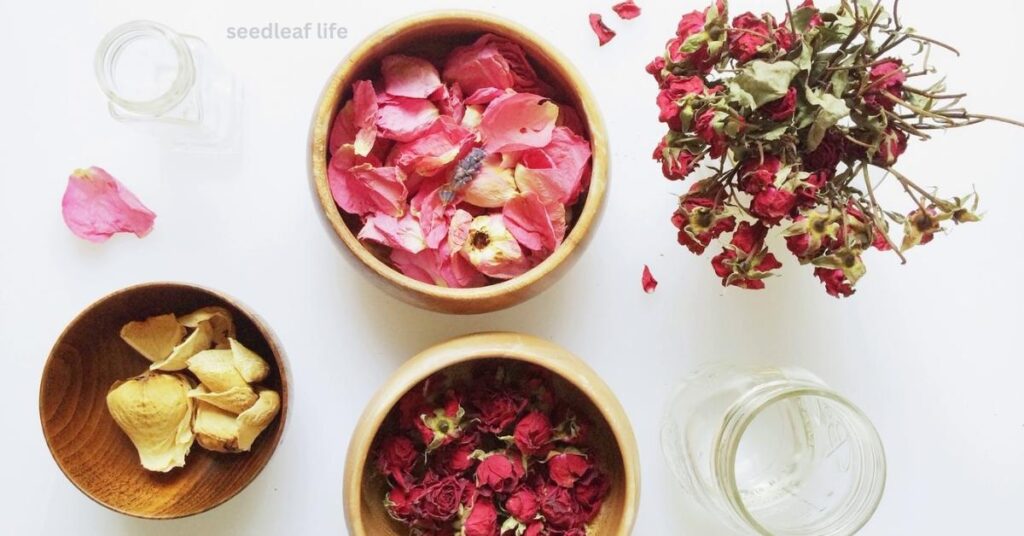
The Damask Rose Plant offers numerous benefits, including uses in skincare, medicine, aromatherapy, and even culinary delights like rose water and herbal tea.
Skincare and Cosmetic Uses
- The Damask Rose Plant is used in the industry for skincare and beauty. Its petals are rich in natural oils and antioxidants.
- Rose water, which is widely known for its benefits, is obtained from the Damask Rose.
- Rose water and rose oil extracted from Damask roses are commonly used in creams, face masks, and toners to maintain healthy, glowing skin.
Medicinal Properties
- For centuries, the Damask Rose has been used in traditional medicine.
- Its extracts are believed to have anti-inflammatory, antibacterial, and mild pain-relieving properties.
- Herbal remedies made from Damask Rose petals are often used to ease digestive issues, soothe sore throats, and reduce stress-related ailments.
Aromatherapy and Relaxation
- The soothing fragrance of Damask Rose is a natural stress reliever.
- Its essential oil is widely used in aromatherapy to calm the mind, reduce anxiety, and promote better sleep.
- Adding rose oil to a diffuser or warm bath creates a relaxing atmosphere that refreshes both body and spirit.
Culinary Uses (Rose Water, Jam, Tea)
- The culinary value of the Damask Rose is equally remarkable. Its petals are used to make rose water, a popular ingredient in Middle Eastern and South Asian sweets.
- Rose petal jam, syrups, and herbal teas made from Damask Rose not only enhance flavor but also provide health benefits, including improved digestion and immunity.
How to Grow Damask Rose Plant
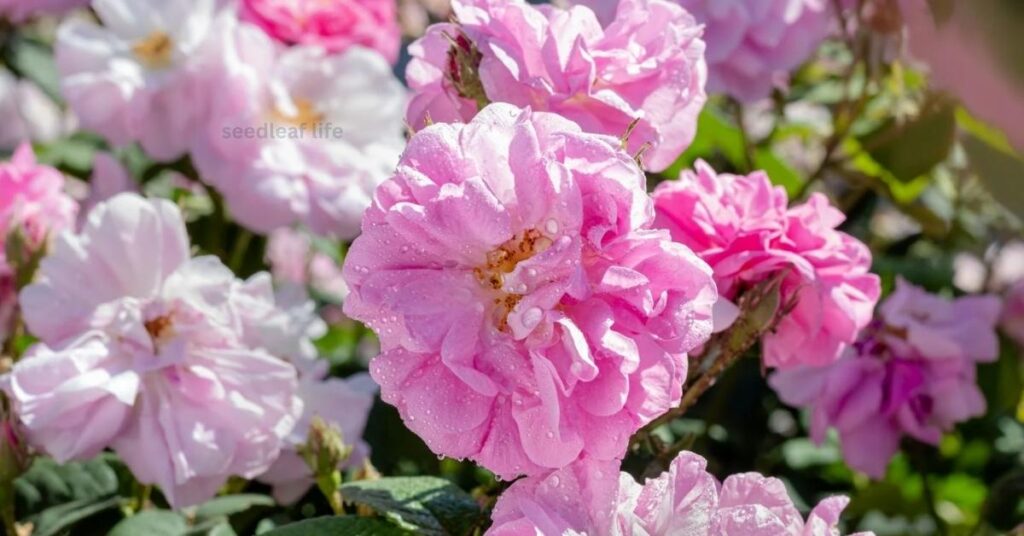
Growing the Damask Rose Plant requires patience, proper care, and the right gardening techniques
Ideal Climate and Soil Conditions
- The Damask Rose Plant thrives best in mild to temperate climates.
- It prefers well-drained, loamy soil that is rich in organic matter.
- Slightly acidic to neutral soil (pH 6.0–7.0) provides the best environment for healthy growth.
- Avoid heavy clay soils that retain too much water, as this can damage the roots.
Watering and Sunlight Needs
- Damask Roses require regular watering, especially during dry seasons, but the soil should not become waterlogged.
- Deep watering 2–3 times a week is usually sufficient.
- They also need plenty of sunlight—at least 6 hours of direct sunlight daily—to produce vibrant blooms and strong fragrance.
Fertilization and Care Tips
- For healthy growth, feed the Damask Rose Plant with a balanced fertilizer or organic compost every 4–6 weeks during the growing season.
- Pruning is also important, remove dead or weak branches to encourage new growth and better air circulation.
- Mulching around the base helps retain soil moisture and protect roots from extreme temperatures.
Common Problems and Their Solutions
- Like other rose varieties, Damask Roses may face issues such as aphids, powdery mildew, or black spots on leaves.
- Regular inspection and natural remedies like neem oil spray can help control pests.
- Ensuring good airflow and avoiding overwatering reduces the chances of fungal diseases.
Propagation of Damask Rose Plant
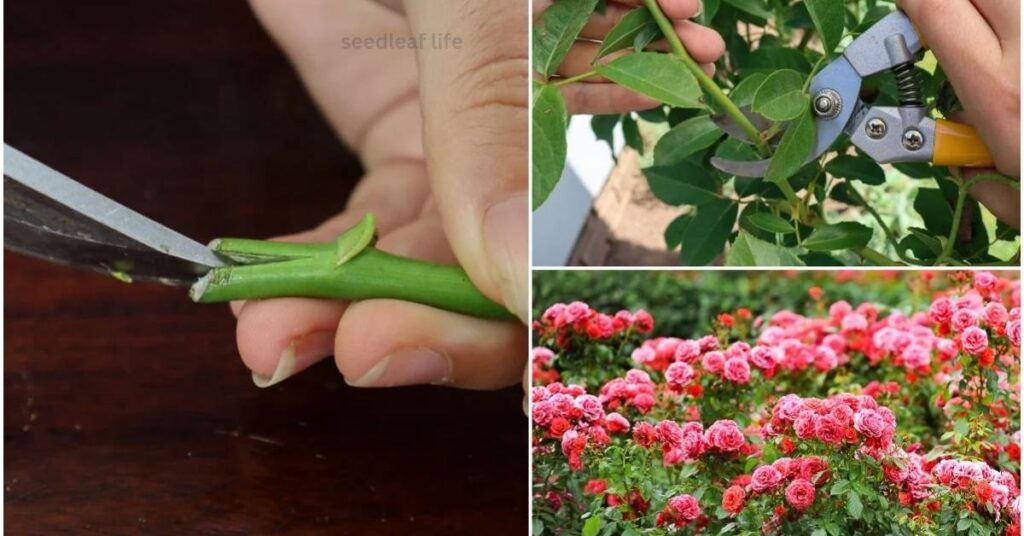
The Propagation of Damask Rose Plant can be done through cuttings, layering, or seeds, allowing gardeners to grow new healthy plants easily.
Cutting Method
- One of the most common ways to propagate the Damask Rose Plant is through stem cuttings.
- Healthy stems are cut about 6–8 inches long and planted in well-draining soil or a potting mix.
- Keeping the soil slightly moist and providing indirect sunlight helps the cuttings develop roots within a few weeks.
Layering Method
- In this method, a low-growing branch of the rose plant is bent down and covered with soil while still attached to the parent plant.
- Over time, roots begin to grow from the buried section. Once the roots are established, the new plant can be separated and replanted.
- This technique ensures higher success because the branch continues to receive nutrients from the parent plant during root development.
Seed Method
- Propagation through seeds is less common, as it takes longer for the Damask Rose to mature and bloom.
- The seeds need to be stratified (exposed to cold conditions) before planting to encourage germination.
- Although this method requires patience, it can be useful for producing new varieties and maintaining genetic diversity.
Recent Research on Damask Rose
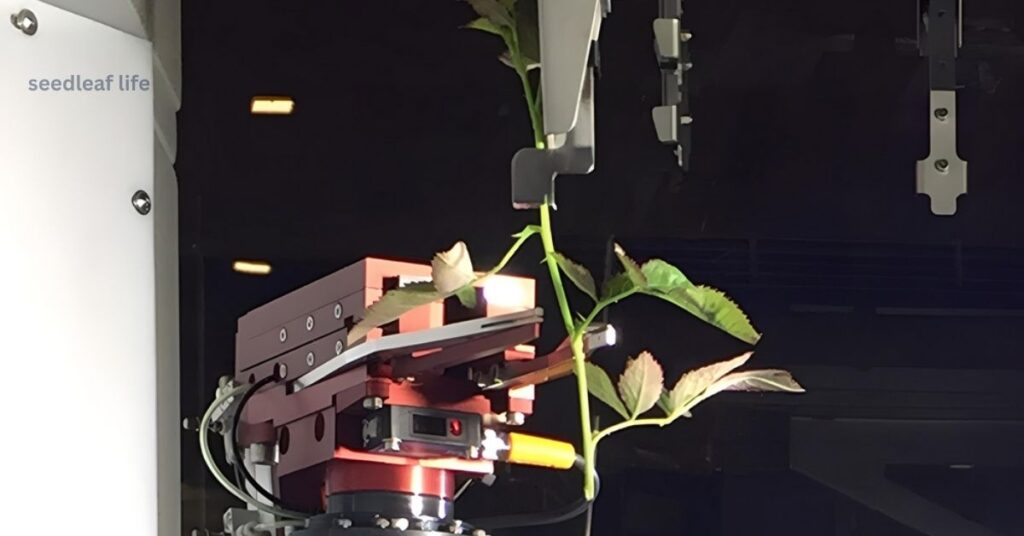
Effect of Salinity on Growth
- At present, many new experiments are being carried out in science.
- High soil salinity has a negative effect on the Damask Rose plant, as it reduces growth and photosynthesis.
- The shoots are more affected than the roots.
- The purpose of this research is to understand that choosing the right type of soil and irrigation methods is essential for better crop production.
AI and Robotics in Harvesting
- harvesting Damask roses is one of the most difficult tasks because the flowers bloom for only a short period of time.
- Therefore, scientists have developed advanced AI models, such as YOLOv8s, which can detect bloomed flowers with up to 98% accuracy.
- This technology can make robotic harvesting possible, helping farmers save both labor costs and time.
By-Products and Waste Utilization
- After extracting rose oil, the leftover petals are often discarded.
- However, research shows these petals are rich in antioxidants and phenolic compounds.
- Scientists have successfully used Damask Rose extracts to develop eco-friendly nanoparticles with potential applications in medicine and cosmetics, making rose cultivation more sustainable.
Aroma and Environmental Stress
- Studies reveal that environmental stresses—such as heat, drought, and soil salinity—can alter the volatile compounds that give Damask Rose plant their unique fragrance.
- This indicates that proper climate and soil management are essential for maintaining high-quality essential oil production.
Damask Rose Plant in Indoor and Outdoor Gardening
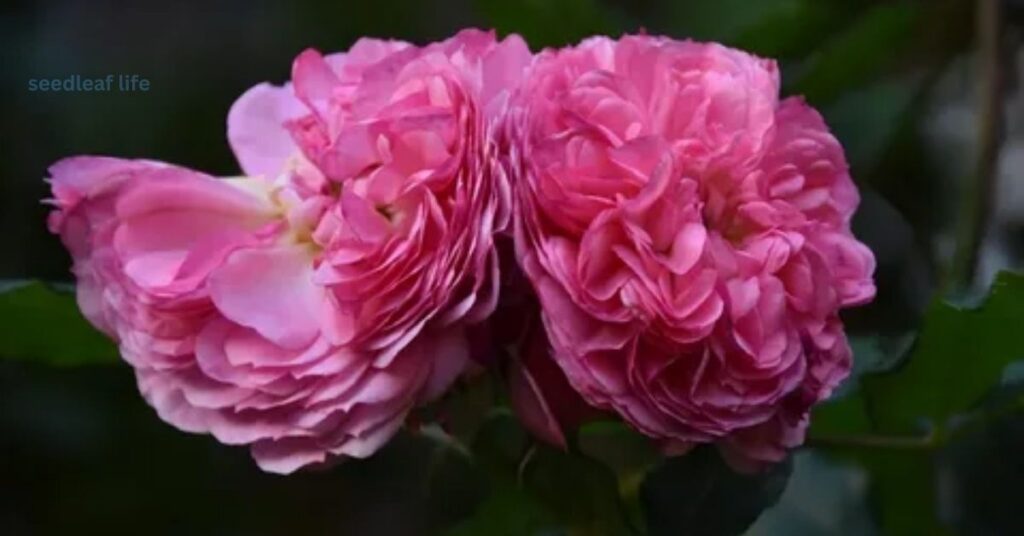
Container Gardening
- The Damask Rose Plant can be successfully grown in containers, making it a good choice for patios, balconies, and small gardens.
- Use a large pot with proper drainage holes and fill it with nutrient-rich, well-draining soil.
- Regular watering and pruning help maintain the plant’s shape and encourage continuous blooming. With the right care, container-grown Damask Roses can thrive and add elegance to indoor spaces.
Outdoor Landscaping Ideas
- In outdoor gardens, Damask Roses make a stunning addition to landscapes. They can be planted as standalone shrubs, in flower beds, or combined with companion plants to enhance their beauty and fragrance
- Their lush pink blooms create a romantic and classic look, perfect for walkways, garden borders, or themed rose gardens.
- Apart from their ornamental value, they also attract pollinators like bees and butterflies, making the garden more lively and eco-friendly.
Frequently Asked Questions (FAQs)
How long does Damask Rose Plant bloom?
The Damask Rose typically blooms once a year during late spring to early summer. However, with proper care and favorable conditions, the blooming period can last for several weeks.
Can Damask Roses grow in pots?
Yes, Damask Roses can be grown in pots or containers. They need a large pot with good drainage, nutrient-rich soil, and at least 6 hours of daily sunlight to thrive and produce healthy blooms.
What is the best season to plant them?
The best time to plant Damask Roses is in early spring or autumn. These seasons provide mild temperatures, allowing the roots to establish before the stress of extreme heat or cold.
Conclusion
The Damask Rose Plant is not just a flower—it’s a timeless treasure of beauty, fragrance, and natural healing. From skincare and medicine to aromatherapy and culinary delights, its uses are endless. With the right care and attention, this ancient rose variety can reward you with breathtaking blooms and soothing benefits.
Ready to add elegance and wellness to your garden? Start growing your own Damask Rose Plant today and experience the charm that has captivated hearts for centuries!

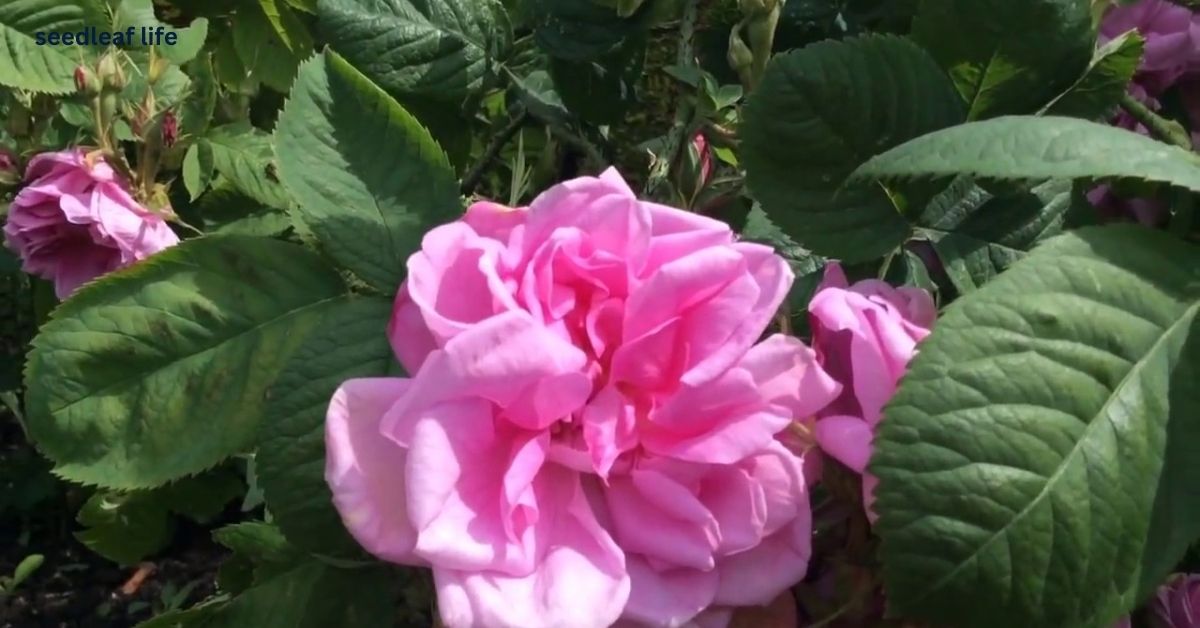
Leave a Reply to 7 Proven Tips on How to Plant Lavender Seed and Care Cancel reply